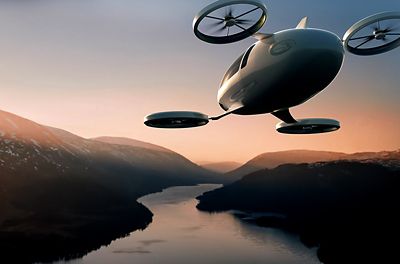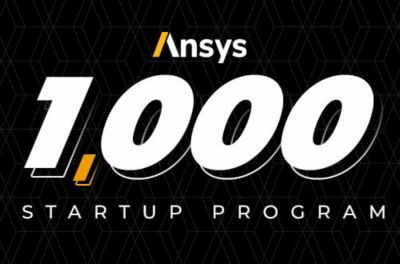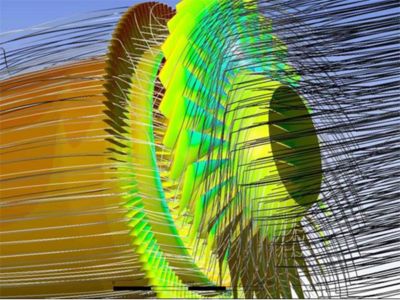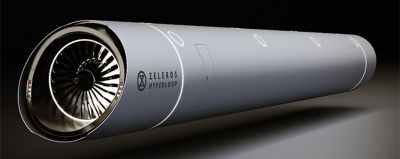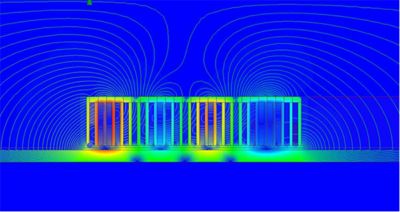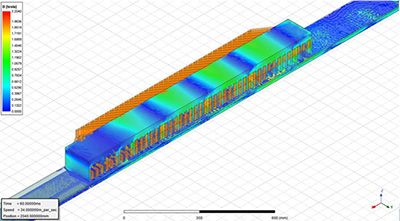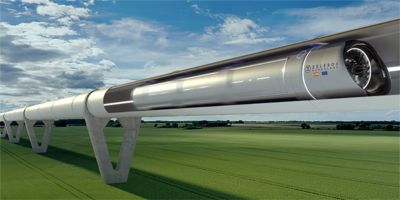ANSYS BLOG
November 30, 2020
Simulating the Hyperloop, the Ground Transportation System of the Future
When SpaceX held the first Hyperloop Design Weekend Competition in Texas in January 2016, a team of five students from the Universitat Politècnica de València (UPV) in Spain, calling themselves Hyperloop UPV, won awards for Best Overall Concept Design and Best Propulsion System.
The overall concept was to use magnetic levitation to give their Hyperloop vehicle a frictionless ride through the tube; the propulsion system was a turbofan on the front of the vehicle that sucks in the air that would otherwise build up in front of it and cause drag.
Visit theAnsys Startup Programfor more information.
Hyperloop UPV designed this award-winning prototype with the help of theAnsys MaxwellandAnsys Fluentsoftware that they obtained as an Ansys sponsored student team
Later in 2016 some members of the team formed Zeleros, a company determined to win the race to bring the first commercial Hyperloop system to market. The Hyperloop is intended to connect cities with a high-speed transit solution consisting of passenger and cargo pods moving through a metal tube at speeds of up to 1000 km/hr, comparable to airplane speeds.
An Ansys Fluent aerodynamic analysis of turbofan engine
As soon as they formed the company, the person at the university in charge of the Ansys licenses told them they were now eligible for reduced-cost software through theAnsys Startup Program. Zeleros immediately began taking advantage of the program’s benefits to use Maxwell to design the magnetic levitation system and Fluent to study the airflow through the turbofan and the rest of the vehicle–tube system.
“在西班牙,种子资金是很难找到,你基本cally have to demonstrate your company’s credibility by surviving and making progress for three years in the desert,” says Daniel Orient, co-founder and CTO of Zeleros. “At the beginning we had difficulties finding the money for salaries and laptops. Fortunately, Zeleros successfully overcame these years raising public and private supports. Thanks to Ansys Startup Program, we were able to navigate this journey with a simulation option that fit our budget, without the need of outsourcing the simulation engineering.”
A Unique Approach to the Hyperloop
Orient describes Zeleros’s approach to the Hyperloop challenge as “designing a plane without wings to travel through a tube.” They are the only company in the Hyperloop race to place all their technology in the vehicle, like the electromagnets for levitation and the turbofan for thrust. This approach will make building the infrastructure — the Hyperloop tube — cheaper and easier to maintain. Other companies are placing the propulsion equipment in the tube instead of the vehicle, but this requires repeated placement of propulsion equipment at regular intervals throughout the tube, making the infrastructure much more expensive.
The Zeleros Hyperloop design uses a turbofan on the front of the vehicle driven to reduce the drag.
此外,insi Zeleros选择的压力de the tube equivalent to the pressure outside a plane flying at an altitude of approximately 15 km. Other designs call for the tube to be at lower pressures, which theoretically would eliminate all the drag because there is no air to deal with. Zeleros chose this intermediate pressure with eventual certification in mind. “One of the main barriers for the Hyperloop will be the certification process,” Orient says. “Because it is a new transportation technology, it has to be safe and reliable. So, by choosing a pressure experienced by airplanes, we know that there are already solutions and standards for their design and certification.”
Simulating Magnetic Levitation and Turbofan Airflow
无翼飞机汽车设计,磁铁ic levitation replaces the wings to give the pod the lift it needs to move through the tube without contact with the tube itself. It’s a tight fit, like a piston in an engine. A combination of permanent magnets and electromagnets located on the topside of the vehicle controls the distance between the top of the vehicle and the tube wall. Zeleros engineers control the distance between the permanent magnet and roof with electromagnets and a gap sensor that continuously measures this distance in a closed-loop control system.
Transient electromagnetic simulation of linear machine
“We use Maxwell to simulate this process because it is an unstable system,” Orient says. “If everything in the loop isn’t controlled, the permanent magnets can fall down or fly up against the roof.” Using Maxwell, they can change the gap distance and the current flowing through the electromagnet and measure the magnetic force. Then they can do experimental runs on a small-scale test model to check Maxwell’s results. “This simulation is quite easy to do on the magnetic side because the equations are quite thorough and the results match very well with the experimental data,” Orient says. “The results you get are very truthful.”
The fluid dynamics of the system are much harder to model, according to Orient, because setting up the mass of the vehicle and the boundary conditions adds more variables. Because they decided to go with an intermediate pressure inside the tube, there is air in the tube that builds up in front of the vehicle’s nose and causes drag. “Our main aerodynamic problem is that we have a vehicle that is more or less the same diameter of the tube to cut costs, but this makes it impossible for the air to go around the vehicle because there is no space.” Orient says
Zeleros uses Ansys Maxwell to simulate the magnetic system.
The Zeleros team uses Fluent to model this complex system, with the turbofan on the front of the vehicle driven by an electric motor swallowing the air to reduce the drag. The air is expelled from the rear of the vehicle. “This process generates the little bit of thrust we need to keep the vehicle moving at the desired speed,” he says.
The Promise of Speedy, Non-Polluting Land Travel
Because the whole system is driven by electricity, the Hyperloop will produce no pollutants, unlike airplanes. The availability of rapid ground travel could also reduce the congestion at airports as more people keep flying every year (disregarding 2020 and the drop in travel due to COVID-19). Despite early hype about the Hyperloop being ready in a year or two, Orient says that there is still a lot that needs to be done before it is a reality. Zeleros projects having an operational system available by 2027. Certification could take another two to three years, so they are aiming for a commercial launch in 2030. The first team to the finish line could have a major effect on the design of the Hyperloop tube itself.
A rendering of the Zeleros Hyperloop design
“Now that the Hyperloop is more visible, we are trying to demonstrate that our concept is feasible and cheap enough to be built,” Orient says. “It’s a race with different companies working on the same concept with different solutions. Ansys software is helping us in this race.”
Check out theAnsys Startup Programweb page for more details on how your company can participate.












